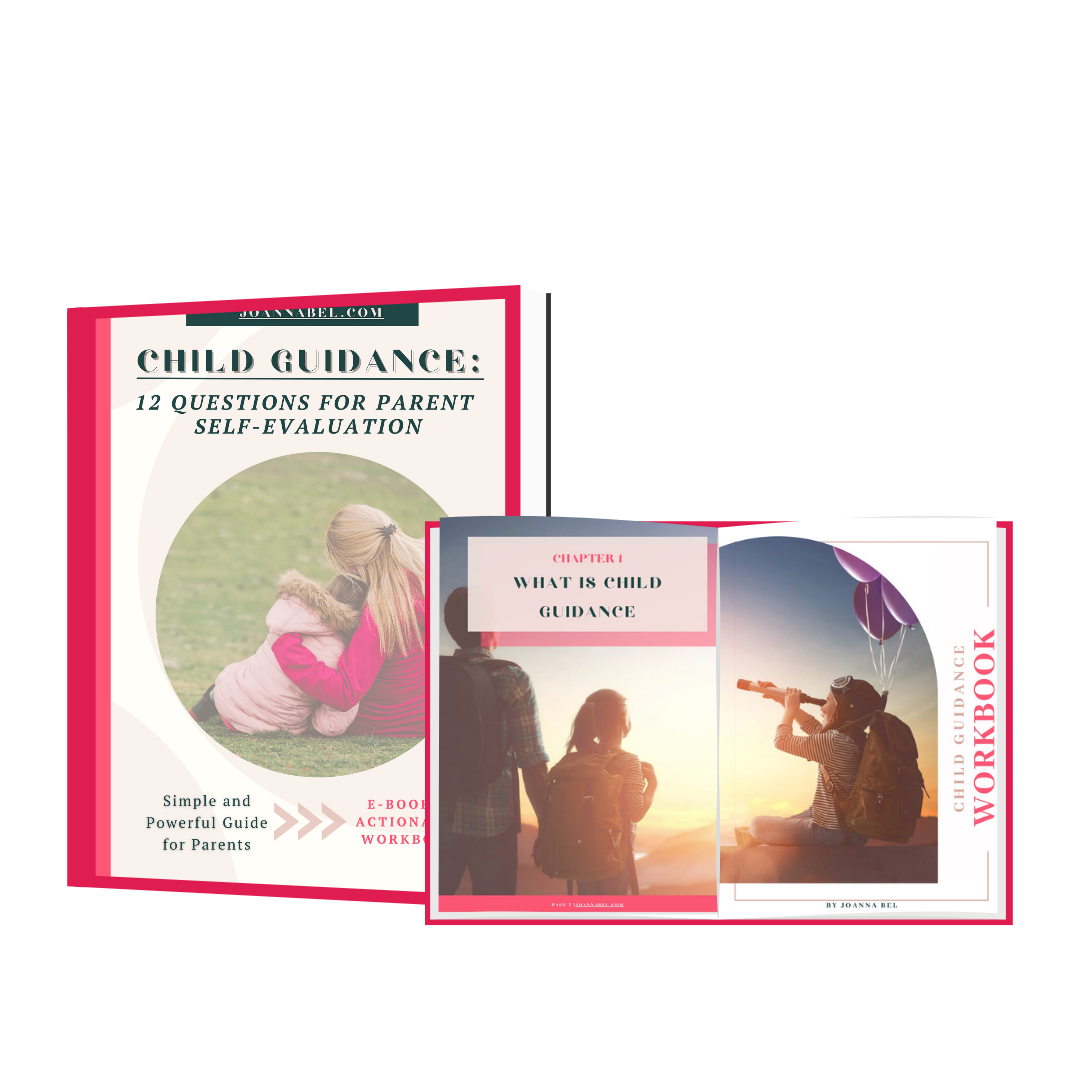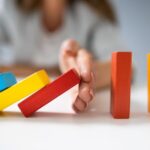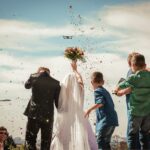If it’s important that you know what the best way to punish a child is, then this post is a good resource for you.

The Best Way To Punish A Child
I suppose that by asking this question, you’d like to get an answer in the form of a solution or a fix because it seems like it’s much easier this way. But this is not what I’ll do in this post.
Still, I firmly believe you should hear me out.
The fact is, you don’t need a concrete example or any form of punishment. What you really need instead is to understand:
- a single purpose of punishing
- what principles you need to respect when using punishment as a disciplinary measure
- the child’s position
- the common misconceptions of the punishing process
- the usual mistakes with punishments you need to and can easily avoid as a parent.
When you do, then you’ll know what to do and what not to do when it comes to punishing.
And this is why in this post we won’t talk about what punishments you need to come up with; instead, we’ll talk about what you need to honor when you’re using punishment.
Stick with me until the end of this post because I’ll be mentioning helpful resources that can be very useful to you if you’re serious about this topic.
Note: Although I am a Clinical Social Worker, engaging with this website does not establish a professional social worker-client relationship. The information provided here is for general purposes only and should not be considered professional advice. While we strive to ensure accuracy and reliability, this content is not a substitute for professional guidance. For specific concerns, issues, or situations, it is essential to consult a qualified professional and present your situation. Read the full Disclaimer here.
THE BEST (“RIGHT”), EFFECTIVE WAY TO PUNISH A CHILD

QUICK REMINDER: Don’t confuse (equate) the terms punishment and discipline, even though you hear that the words “discipline” or “punishment” are used in common parlance interchangeably.
NOTE: Please note that this post isn’t intended to promote punishment.
I want to talk to you about how the punishment needs to be structured and designed so that when you think about what punishment you should choose, you know if it’ll do you any good or not.
So, you need to think in terms of principles you must respect, not in terms of what particular punishment you should choose.
It doesn’t really matter what it looks like as long as it’s between these boundaries.
So then, let’s see what principles you need to respect to choose a good punishment.
1. THE CHILD NEEDS TO UNDERSTAND WHAT PUNISHMENT IS
If a child doesn’t yet have the capacity to understand the purpose of punishment, the punishment needs to be avoided at all times.
This is because used this way, it’s only hurtful and harmful to them, and the only purpose it has is to soothe the parent who can’t handle the situation.
It doesn’t matter how old the child is; if they can’t comprehend it, you are not to use it.
You cannot punish a child who doesn’t comprehend the punishment simply out of your annoyance and because they’re doing something you don’t approve because:
- you’re disrespecting their human dignity and integrity
- you’re putting your own needs before theirs
- you’re not protective of them and their rights, and you’re obligated to do so
- you’re not being responsive to their emotional and other needs
- you’re not stimulating their development but rather jeopardizing it
- you’re potentially abusive
- you’re potentially creating traumatic experiences for them
- this way there’s no way of prosocial behaviour to instill because a lesson isn’t really learned, but what is probably learned is how to avoid unpleasant things in life.
If a child can understand the point of punishment, then it can potentially “be useful” to them because it can teach them important lessons on the right way to behave, socially interact, and what socially unacceptable behavior and interaction is.
But of course only if the punishment is in fact (in reality) focused on learning and not just declaratively.
Let’s explore this a little more.
2. THE PUNISHMENT NEEDS TO BE FOCUSED ON LEARNING
The punishment needs to be focused on learning and not on (harsh) punishing.
You know they’ve learned a lesson if they are doing things differently in a similar situation.
But if they have to make a few mistakes to learn what you’re trying to teach them, don’t punish them while they’re still developing a skill. This is counterproductive and can lead to emotional problems.
Instead, wait and support them as they push through.
If you punish them again while they are still in the process of learning, you can risk them relapsing to the old way of managing things because they’re demotivated.
And now you’ve validated their belief that they are not capable of doing things any other way besides the way they already do.
So, support them and praise them for trying to get it right. Have faith they will push through—don’t let the fear block your patience.
Sometimes it just takes time; as you know, all of us need some practice to become good at something. Or anything, as a matter of fact.
Especially if we have done it in a different way for quite some time.
3. THE PUNISHMENT NEEDS TO ADRESS THE PARTICULAR OFFENSE, NOT THE PREVIOUS OFFENSES
Past behavior can be a predictor of future behavior, but this doesn’t mean we can punish past behavior, especially if the things regarding the past behavior were in some way put ad acta (dropped).
Firstly, considering the purpose of punishment is to teach a lesson about what’s appropriate, you must approach it with a clear mind.
This means you aren’t supposed to conduct it out of anger towards the child.
You need to connect with the child, not create separation.
This further suggests that you need to understand the behavior first and not just jump to the conclusion that they’re naughty.
To understand the behavior better, you need to try to comprehend:
- where the child was coming from when they did what they did
- what part they just don’t get; and what they are doing wrong -> what seems to be the issue when it comes to their skills to deal with a particular situation more constructively.
- are they behaving “inappropriately” because they don’t yet feel confident now that they’ve acquired a new skill (for example, they used to behave in a different way and now they show progress, but they don’t feel that skilled yet).

Secondly, you cannot punish them for their previous behavior because you need to teach them a lesson concerning what they did right now.
And if you do punish, then you’re in the field of retribution and not the field of learning any more.
This is true even when you let them get away (easily) the previous time, but now that it’s happening again, you’re regretful of this and you want to “set things straight.”
The fact that you let them get away is actually on you, and you need to deal with it and yourself, and they shouldn’t take on your burden.
But what you can do is use previous behavior to learn more about future behavior and understand if something is a pattern or not and whether it will happen again or not.
A TIP for you: Whatever problem you’re experiencing with kids or in life generally – always start from where you are now.
4. THE PUNISHMENT NEEDS TO BE MEASURED AGAINST THE OFFENSE
You need to choose a punishment that is not too mild for the offense or too strict for the offense.
If it’s too mild, then you can get them to get away easily.
And if it’s too strict, then you’ve stepped into a harsh-mannered punishment that can be harmful, and that’s harmful in the long run.
This means you’re not teaching a lesson anymore; you’re trying to do something else.
For example:
- you could be trying to resolve your anger towards them or others,
- you could be attuning them to your convenience (they’re disrupting your comfort),
- you don’t understand the purpose of punishments (- they aren’t used for keeping children in their place, because children don’t have “their place”. They are used so children can improve while still being free to practice their ever evolving autonomy, negotiate with you, and have their say on things).
When punishment is too strict, you’re tiring a child and risking their mental health, especially when this keeps repeating.
This is particularly true if you reach for the punishment as an easy way out by implementing it casually any time kids don’t meet your (personal) expectations.
Or if a child is already showing signs of unadjusted (or antisocial) behavior and you let them get away with their behavior (again) by withdrawing from the disciplinary measure, you’re doing them a disservice by enabling the behavior to keep happening.
That’s because you’re again avoiding setting the limitation and demanding that they attune to “good” behavioral standards.
I said again, because what probably led them to keep disregarding the boundaries and limitations is your pattern of permissivness.
Or maybe they have a model of similar behavior in your family group that they’ve adopted.
You’ll probably find useful:

5. PUNISHMENT NEEDS TO BE COMMUNICATED TO CHILDREN
It’s critically important that you do not react and are impulsive concerning the child’s (mis)behavior.
What you need is responsiveness because the point of the punishment you are using is to help a child learn. It’s not about punishing or retribution.
It’s not about:
- getting even,
- prevention,
- showing them their place,
- rigid or violent control,
- demonstration of power and dominance, or anything like that.
I know that you get upset sometimes and that it’s hard to keep your composure, especially if you have so many problems in life that you are trying to address or are juggling.
But regardless, what you can do is step away for a second and then come back when you’re more composed and then deal with the (mis)behavior.
Most of the time, things aren’t as urgent as they appear, and you have enough room for maneuvering.
This is especially important because when you’re in the “fight or flight” mode, you can’t think more openly or see the bigger picture because your brain is in a protective mode and is only trying to keep you safe while you’re not in real, life-threatening danger.
And this makes you vulnerable to excessive aggression or withdrawal/running, and it’s not the right mental space for dealing with misbehavior.
Now, concerning communicating punishment to children, they need and have the right to know:
- why punishment is occurring,
- when it’ll happen,
- what it’ll look like,
- how long will it last, and
- what’s expected of them to do.
This is important because a punishment isn’t to be implemented casually, as some kind of sport, and believe me, this still keeps happening to children.
By using punishment in this way, you’ve stepped into the field of abuse, as this may potentially feel like torture to children because they can’t grasp what they’re doing right or wrong.
This way they’re kept in suspense and disgrace, and this is very hurtful and creates harm.
Nothing about punishment is casual, and it shouldn’t be taken lightly or used unintentionally.
Because punishment must exclusively be meant for teaching a lesson, and the way it should be taught needs to be suitable for a person (child) who needs to learn from it.
Otherwise, it’s either useless, ineffective, inefficient, and/or harmful.
If you can’t find a way to teach a child a lesson while remaining respectful of them and their human and child rights, you need to reconsider the use of punishment as a measure.
Or to put enough effort into adopting acceptable and effective ways to implement it.
Check out also:
6. PUNISHMENTS NEED TO BE RESPECTFUL OF HUMAN DIGNITY AND RESPECTFUL OF THEIR CHILD AND HUMAN RIGHTS
Punishment can never be vindictive, revengeful, cruel, harmful, exploitative, humiliating, restricting them from satisfying basic needs such as food or drink, torturing them, or take the form of a corporal (physical) punishment.
So this is something you are NOT supposed to put them through, as it is highly harmful, (potentially) traumatic, illegitimate, and illegal.
(If your country has ratified the Convention On the Rights of the Child, even if the national law doesn’t restrict them, that doesn’t matter because the national laws and courts can’t overrule the Convention as an international treaty.)
And now I want to mention what you can put them through.
It may happen that your actions don’t harm them but hurt their feelings. They may not like it, obviously, but this is the pain that you can put them through in some situations when this is beneficial or even necessary.
Because sometimes this is something that just has to happen – they need to develop a tolerance for the necessary amount of frustration and pain in life.
And they need to learn that they can’t have all their needs met at every moment—they can’t have pleasant feelings if they caused someone pain, for example – so don’t try to protect them from their feelings.
Some of these emotions they need to feel so they can learn to deal with them.

It’s not pleasant to feel guilty (it’s the least pleasent emotions of all), but if they are too protected from it and you’re not training them to repair their doing(s), they will avoid this emotion excessively in the future.
This means they won’t be able to show those to whom they did wrong that they acknowledge their feelings or that they’re sorry. As well as to try to understand others, relate to their feelings, and understand their position or perspective.
If you disregard this, then they’ll be focused on (and determined to) avoid any unpleasant emotions.
If we develop a behavioral pattern/habit to avoid every unpleasant situation, then we will become people who make others take care only of our emotional needs and ask them to deny their own because we’re not ready to adjust to the needs of others.
Read also:
7. PUNISHMENT SHOULDN’T BE PHYSICAL (CORPORAL) PUNISHMENT
This leans on my previous point. Corporal punishment MUST be avoided, not because it’s ineffective but because it’s disrespectful of their human dignity and human and child rights.
Remember, the child’s rights are specific and distinctive and have to be protected at all times. And if you’re practicing corporal (physical) punishment, you’re violating their rights.
Just as anyone else doesn’t have the right to use physical punishment on you because your bodily autonomy is protected by the law, it’s exactly the same for children.
The reason why parents and other adults assume they can use corporal punishment on children (or on women) is because they still operate under the belief that children (or women) belong to them as undivided, unseparated beings that have their purpose in life closely (or only) in (cor)relation to those adults and do not exist independently from them.
BUT THIS IS FALSE.

So people keep using corporal punishment because this was a practice that kept transferring from generation to generation from the times when children weren’t seen as separate individuals from their parents and when their rights weren’t separately and specifically defined and protected like they are now.
And if you’re feeling conflicted about the restriction of corporal punishment, that’s because you’re falling behind the contemporary society standards and are still operating under the old paradigm of a child being unseparated, undivided, not sovereign, and non-existing without their role as “the parent’s child.”
Once you truly realize that child is an individual with integrity and sovereignty just like you, you will not (continue to) go in this route.
Just declaring that you do see them as humans with integrity isn’t enough to change your beliefs and your behavior.
Your children do not belong to you or to anyone, just like you don’t. You’re a separated, autonomous person, and nobody has the right to violate your human rights.
So, to conclude:
- It’s your responsibility to find a constructive way (or external help) for a child to understand or improve their behavior.
- If your discipline system doesn’t show the results you want, you probably need to work on the system.
- If you’re not sure what you’re doing wrong, ask for help. There are so many learning opportunities nowadays.
- It can happen that the parent is the one who led to the child’s misbehavior (in)directly, so think of this for a moment.
- If this is your common practice, you’re risking that a child might learn that physical punishment is love because they may associate them this way.
- You’re at risk of hurting the relationship with your child in the long run.
- You’re risking that a lesson doesn’t get learned, and they might interpret this as a lack of love. This doesn’t mean this is true, but that can be the message.
- You’re at risk of losing the respect your child has for you.
- You’re disrespecting and attacking a child’s human dignity.
- You’re disrespecting and attacking a child’s physical integrity.
- You’re overstepping the boundaries.
- You’re violating the Convention on the Rights of the Child, the international treaty that takes precedence over any national law of countries that ratified it.
- You’re violating the child’s rights.
HELPFUL RESOURCES FOR YOU
Now, let’s talk about some punishment and guidance resources for parents that can help you, besides these answers I’ve already provided for you. I’ll mention the 3 resources I created and one that I didn’t, but I recommend it as if it were mine.
1. 10 Dos and 10 Don’t When Implementing Punishments As A Response To Child Behavior
To help you with punishment further, I’ve created a digital download for you – it’s a 10 Dos and 10 Don’t When Implementing Punishments As A Response To Child Behavior. You can use it both in digital format and as a printable. As soon as you receive your download, you can immediately start using the digital copy.
This digital product will help you:
- supplement this post in clearing out what is and what isn’t recommended (or even acceptable) to do in the case of punishment,
- give you guidelines on what is effective and recommended in form of short tips,
- as well as help you take a quick inventory of your punishment system and take action in case to make necessary changes.

10 Rights & 10 Wrongs When Implementing Punishments
SALE
14$ 9$
Note: This product doesn’t intend to recommend that you use punishment as a disciplinary measure. It’s intended to help you avoid mistakes that can be harmful for children and your relationships with them.
2. Child Guidance: 12 Questions For Parent Self-evaluation
Child Guidance: 12 Questions For Parent Self-evaluation is a resource I created to help parents shed some light on how they’re guiding their children.
It explores 12 different dimensions of child guidance that are crucial if you want to make your guidance effective and contribute to your kids’ most desirable behavior. I don’t mean nice or (too) obedient, I mean prosocial, more independent, strong-willed, and brave enough to question authority and ask questions.
When you open these 12 areas by asking the rights questions, you get a chance to understand what dimension can potentially be causing issues concerning the effectiveness of your parental guidance.
The root problem can usually be found within these 12 areas, but once you start addressing it one by one, usually when you make positive changes in one area, you’ll see that others get the positive transformation, as well. I highly recommend that you check it out.
Alternatively get it in a form of a ebook because it’s a really long informational post with lots of guidelines, and it’s designed with and additional workbook to help you put your insights into action.
It has worksheets and planners, and planners can be used on many different occasions, you could print it as a notebook or yourself, as well.
The pdf is also fillable if you prefer digital formats. Here it is: PARENTAL GUIDANCE: SELF-EVALUATION GUIDE FOR PARENTS (E-BOOK+WORKBOOK).

PARENTAL GUIDANCE: SELF-EVALUATION GUIDE FOR PARENTS E-BOOK+WORKBOOK
SALE
19 $ 11 $
Let’s move on to the next.
3. Child Behavior Management
The second one is called Child behavior management, and it’s created for parents to uncover how good they are at managing a child’s behavior and focus on what they can do to improve their current situation.
I provided you with 12 detailed guidelines you should implement to start managing your child’s behavior more efficiently.
And it all starts with you becoming more and more aware of how you show up for your kids, how respectful are your parental practices, and how you look at parenting in the first place.
4. Online Consultation
Don’t believe any of these would fit and you need personalized approach? See how we can work together then. Learn more right here.
Latest Posts:
- What To Do When Your Parent Struggles With Alcohol

- How To Navigate Moving to a New Home With Your Kids

- Prenups for Young Couples (A Modern Approach)

- What Happens When You Sign A Prenup (Relationship-Wise + Legally)

- Last-Minute Checklist Before You Hit “Sign” on Your Online Prenup

- Online Prenup vs Traditional Lawyer-Drafted Prenup: What’s for You?

FINAL THOUGHTS ON WHAT THE GOOD WAY TO PUNISH A CHILD IS
I hope this post has addressed your questions, doubts, and misconceptions concerning the best way to punish a child.
If you have more questions, please enter them in the comment form below.
And before you go, don’t forget to check out the resources I created and suggested to help you with your parental guidance.
Thanks for your attention and see you in my next post! Here is one:








Leave a Reply